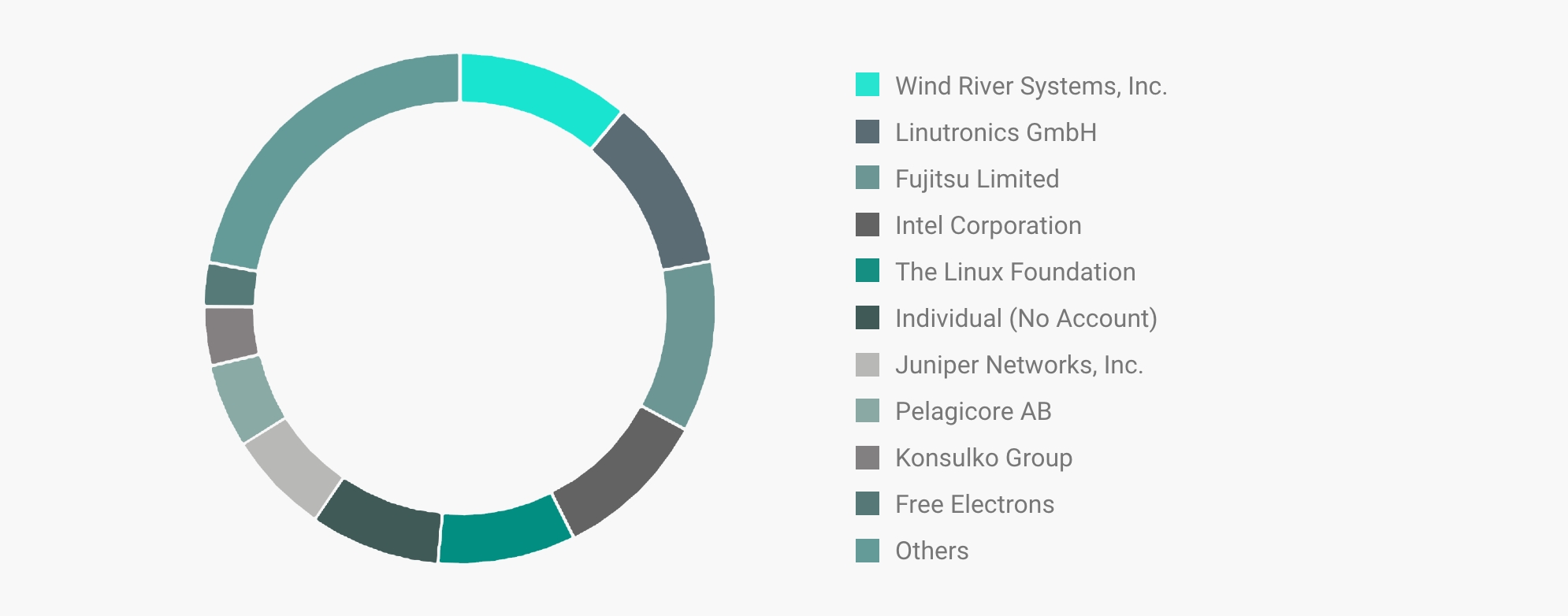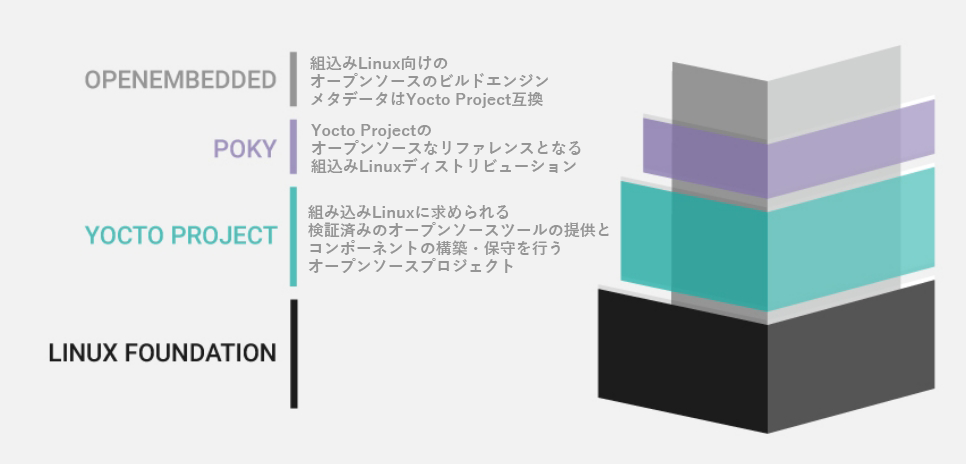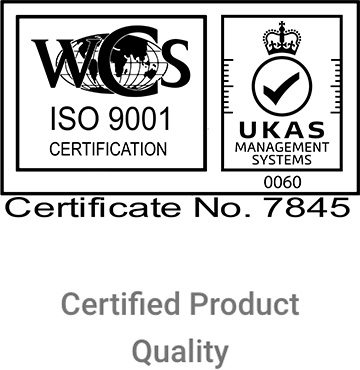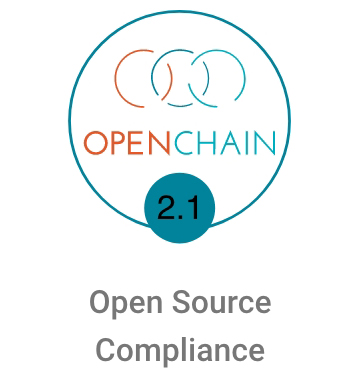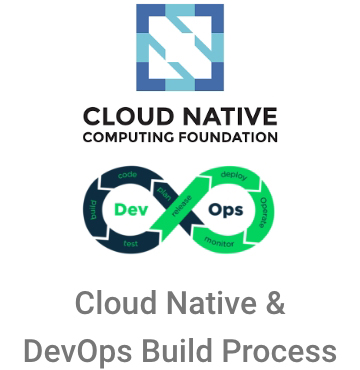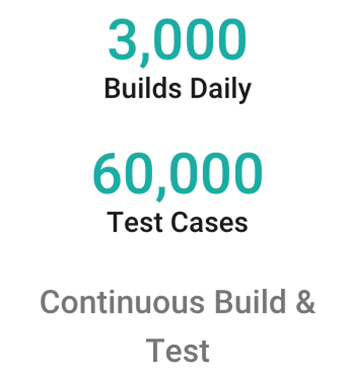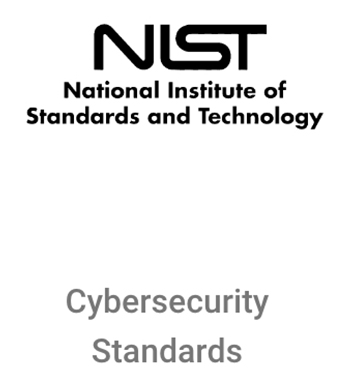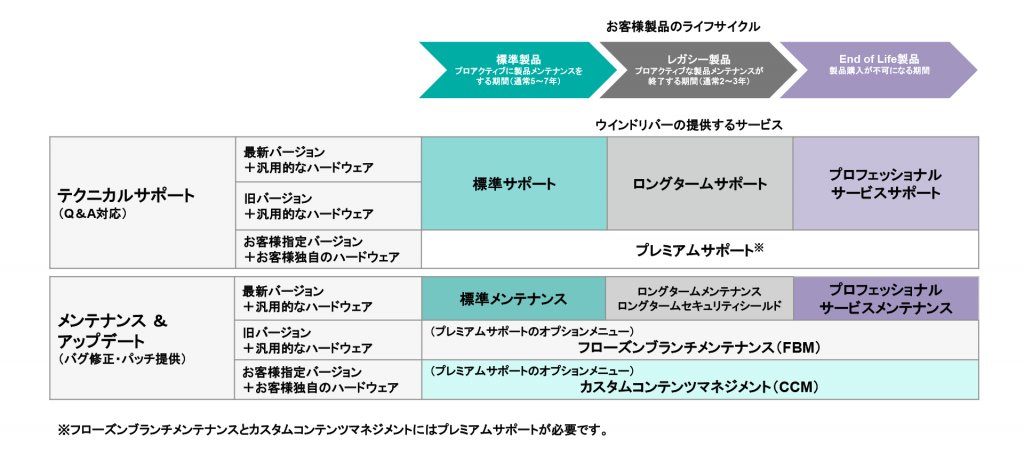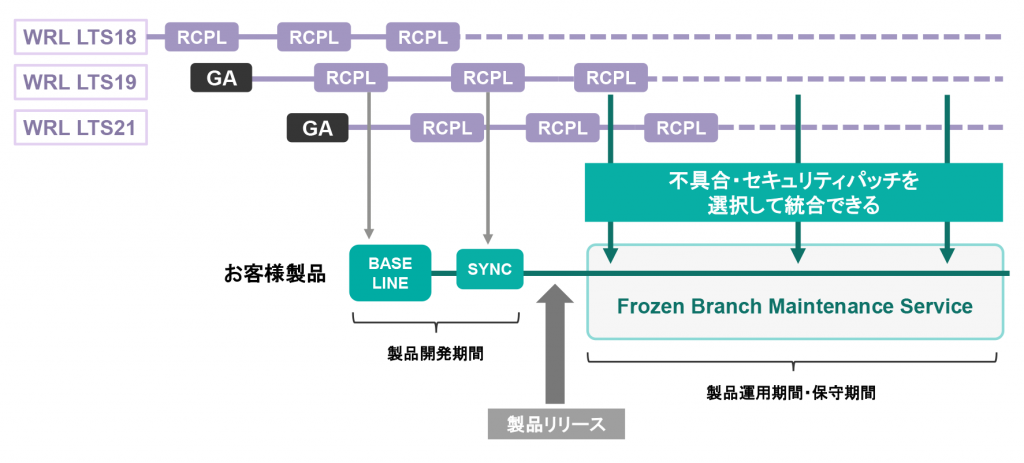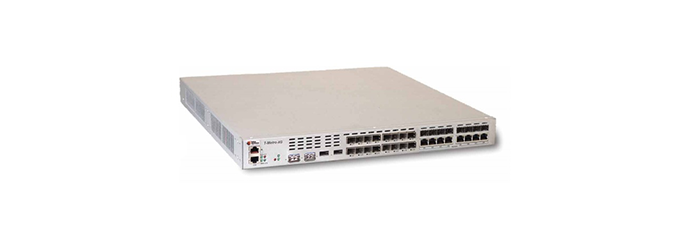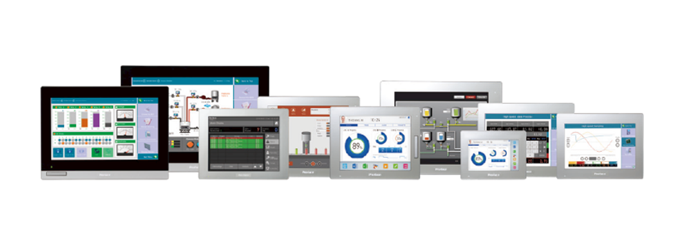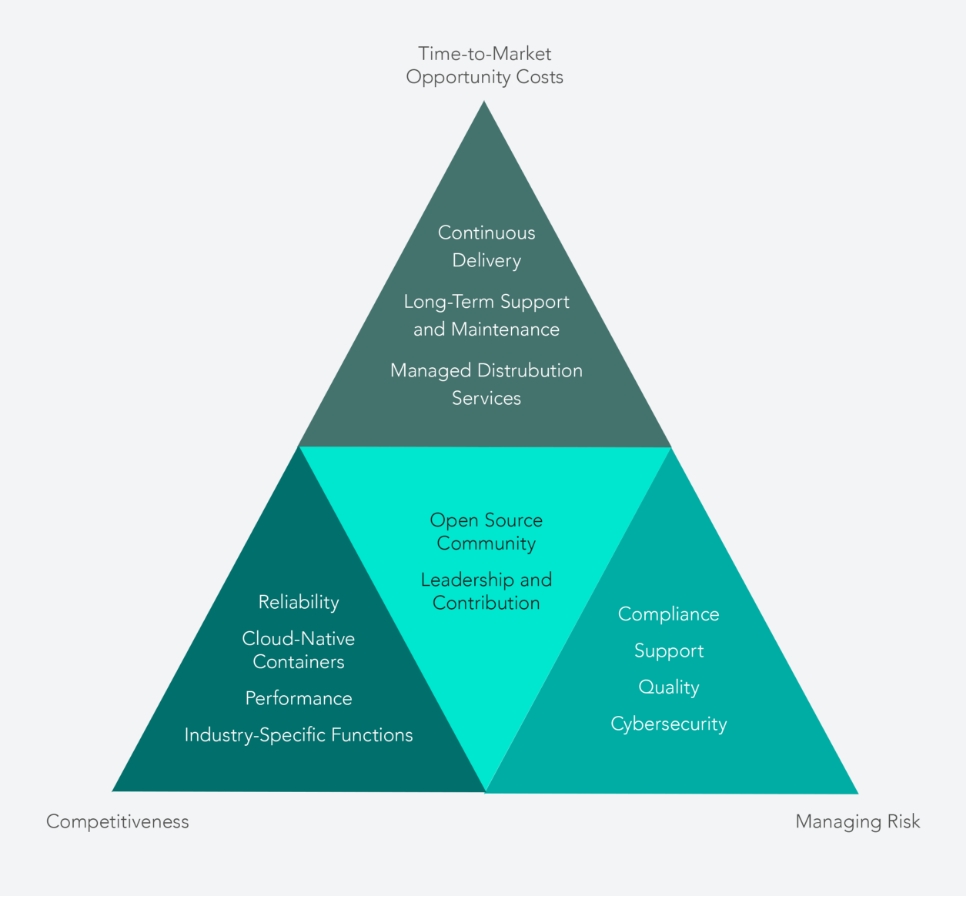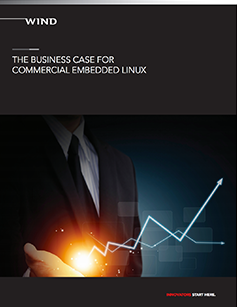Wind River Linuxのお問い合わせ
組込みLinuxに関するご質問やご相談、お見積依頼は、こちらのフォームからご連絡ください。
ウインドリバーの担当者からご連絡いたします。
What Is Embedded Linux? - Japan
組込みLinuxについて学習する
組込みLinuxは、一般的なLinuxシステムと同じLinuxカーネルを基盤として構築されています。Linuxカーネルに各種パッケージを統合したものをLinuxディストリビューションと呼びます。一般的なエンタープライズシステムと異なり、組込みシステムには高い信頼性、各種セキュリティ要件への対応、限られたハードウェアリソース上での動作、10年を超える技術サポートの提供といった厳しい要件が求められます。さらに、インテリジェントエッジと呼ばれる近年の組込みシステムには、デバイス間の連携、クラウド連携、クラウドネイティブ技術の統合、OTA更新テクノロジーの導入なども期待されています。このように組込みシステムのユースケースは製品ごとに異なり、高度な要件が求められていることから、それぞれの組込みシステムに最適なLinuxディストリビューションも各製品向けに最適化されたユニークなものが必要とされています。

組込みLinuxは、各インテリジェントエッジの
ユースケースに最適化されたオープンソースのOSです
オープンソースの基礎
組込みLinuxについて解説する前に、Linuxの基本原則であるオープンソースの考え方、基礎、注意点について説明します。組込みLinuxの開発者は、オープンソースソフトウェアやツールを利用するにあたり、次に示す3つの基本原則に従う必要があります。製品開発において特に注意すべきことは、組込みLinuxに含まれるすべてのソフトウェアライセンスを確認し遵守しなければならない点です。
協力 | Linuxをより良いものとするためにソースコードの共有、コードのレビュー、修正パッチの作成と適用、ドキュメントの整備、コミュニティでのディスカッション、メーリングリストの参加など、コミュニティよる開発課題の解決に協力すること |
|---|---|
革新 | イノベーティブな技術をLinuxへ取り入れ、革新を促すこと |
準拠 | Linuxを構成するすべてのソフトウェアライセンスを確認し遵守すること (ライセンス汚染や規制基準違反をしてはならない) |
組込みLinuxを使うメリット
それでは何故、これらの基本原則に従ってまで組込みシステムのOSにLinuxを採用するのでしょうか。それは、組込みLinuxには前述した注意点に余りあるメリットがあるためです。主なメリットとしては次のものが挙げられます。
- 数多くのハードウェアがサポートされている
- コミュニティが長期サポート(LTS)のライフサイクルを定義している
- コミュニティにより共通脆弱性識別子(CVE)への対策とリリースが行われる
- 広く採用されているLinuxインフラと開発ツールを簡単に入手できる
- サポートされているすべてのプラットフォームにむけたクロスコンパイル開発環境を活用できる
- 最新かつクラウドと親和性の高い技術が採用されている
組込みシステムのハードウェア要件
組込みLinuxを深く理解するには、まず組込みシステムを構成するハードウェア要件を知ることが大切です。組込みシステムを開発するには、低消費電力、限られた演算性能、制限されたメモリとストレージの容量、SoCやボード毎に異なる周辺機器(ペリフェラル)への対応など、様々なハードウェアに関する制約を解決しなければなりません。Linuxは代表的なCPUアーキテクチャであるx86、Arm、PowerPC、RISC-Vなどに対応しているため、組込みLinuxを利用することにより、組込みシステムの要件を満たすハードウェアを自在に選択することができます。つまり、ハードウェアプラットフォームのメリットを最大限に活かしたシステムを開発することが可能です。
Wind River Linux LTS24が標準でサポートしている組込みボードとアーキテクチャ
- Intel Crestmont - Intel Grand Ridge SOC
- Intel Sapphire Rapids - Sapphire Rapids CRB
- Intel Alder Lake - Alder Lake-M LP5 RVP2
- Intel Ice Lake - Ice Lake CRB
- Intel Tiger Lake - Tiger Lake UP3 RVP
- Intel Atom - Elkhart Lake RVP
- Intel Atom - Snow Ridge NS SoC
- qemuarm
- qemuarm64
- qemuarmv5
- qemumips
- qemumips64
- qemuppc
- qemuppc64
- qemuriscv32
- qemuriscv64
- qemux86
- qemux86-64
組込みLinuxアーキテクチャの基礎
組込みLinuxは、組込みシステムの基礎を固めるハードウェアと、組込みシステムの挙動を決めるアプリケーションとを結びつけるOSとして機能します。さらに組込みシステムを分割すると、組込みLinuxシステムのアーキテクチャは次の5つのレイヤーから構成されています。もし、組込みLinuxを自社で独自に開発して管理、運用する場合は、システムを構成するこれらすべての技術に精通したエンジニアを揃え、日々のメンテナンスコストを投じなければなりません。
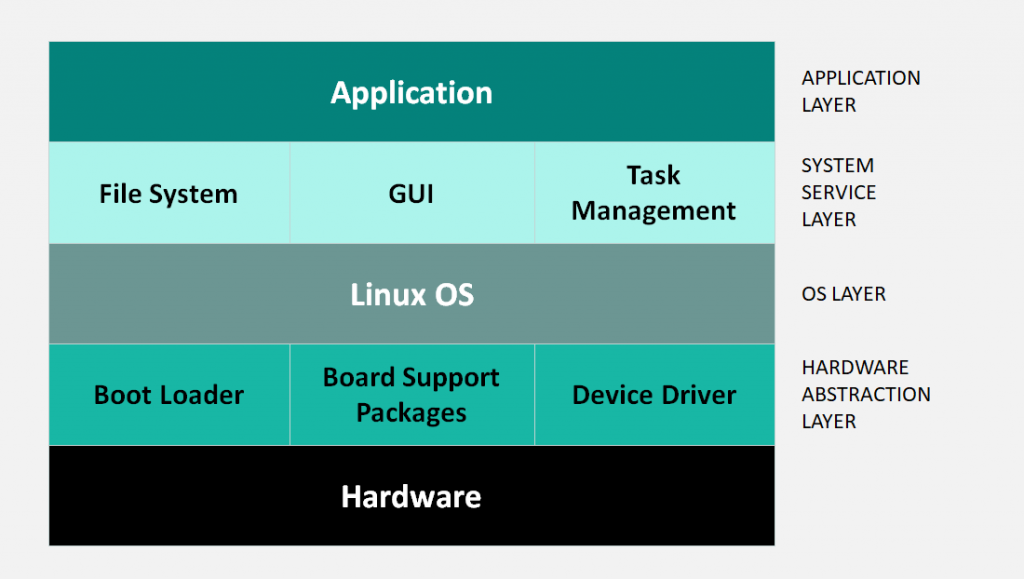
組込みLinuxを構成するコンポーネント
- ハードウェアレイヤー:プロセッサ、メモリ、ペリフェラル
- ハードウェア抽象化レイヤー(HAL):ブートローダー、ボードサポートパッケージ(BSP)、デバイスドライバなど
- Linuxカーネルレイヤー:システム全体を統合するソフトウェア
- サービスレイヤー:ファイルシステム、GUIの提供、タスク管理など
- アプリケーションレイヤー:組込みシステムの挙動を決めるソフトウェア
自作組込みLinuxを開発して製品をつくる上での課題
ここで、組込みLinuxを自社で開発する場合の課題を整理してみましょう。
ボードサポートパッケージ(BSP)の開発
ボードサポートパッケージ(BSP)は、特定のハードウェア環境でLinuxを実行するために必要なデバイスドライバや、デバイスドライバを構成する各種ルーチンを含んだソフトウェアパッケージです。BSPはCPUアーキテクチャとLinuxカーネルを接続するだけでなく、システムオンチップ(SoC)や組込みボードに統合されたペリフェラルを適切に制御しなければなりません。もし組み込みボードに対応するBSPが無く、自社でBSPを開発する場合、ハードウェアに関する専門的な知識とLinuxカーネルに関する知識の双方を兼ね備えたエンジニアが必要となることから人材を揃えることが最初の課題となります。さらにBSPの開発では、ハードウェアを制御するためのソースコードやバイナリパッケージの作成だけでなく、ハードウェアに則してカスタマイズしたテストスイートを作成し実施することをはじめ、組込みLinuxのライフサイクルにあわせてBSPを長期間メンテナンスし続けるコストが必要となります。
アプリケーションやサービスの統合
組込みシステムの中で実行されるアプリケーションは、サービスレイヤーに含まれるサブシステムを適切に呼び出し、組込みシステム全体を制御、インテリジェントエッジの挙動を決定します。組込みシステムごとにユースケースは様々ですから、サービスレイヤーをカスタマイズする必要があります。例えば、クラウドと連携する組込みシステムを開発するには、クラウドネイティブなソフトウェアや通信ライブラリを統合するといったことが求められます。一方で、不必要なライブラリを統合してしまうと、潜在的なセキュリティリスクとなるため、統合するサービスの選定は慎重に行わなければなりません。
組込みLinuxディストリビューション入門
Linuxディストリビューションには、組込みシステム向けのLinuxディストリビューションだけでなく、エンタープライズ向けのLinuxディストリビューションや、自社で開発し運用するLinuxディストリビューションに至るまで様々な種類があります。これらのLinuxディストリビューションの共通点と相違点、それぞれの特徴について理解を深め、組込みLinuxディストリビューションに求められる要件を学びましょう。
| エンタープライズLinux | |
|---|---|
| 商用エンタープライズLinux | コミュニティサポートエンタープライズLinux |
|
|
|
Linux Communities (e.g., kernel.org) |
|
| 組込みLinux | ||
|---|---|---|
| 商用組込みLinux | コミュニティサポート組込みLinux | ハードウェアベンダー製Linux |
|
|
|
|
Linux Communities (e.g., kernel.org) |
||
| Roll-Your-Own Linux |
|---|
|
|
Linux Communities (e.g., kernel.org) |
エンタープライズLinuxと組込みLinuxの違い
汎用サーバやデスクトップ向けのLinuxをエンタープライズLinuxと呼びます。エンタープライズLinuxには、Red Hat Enterprise LinuxやUbuntuなどのLinuxディストリビューションがあります。エンタープライズLinuxは、十分にハードウェアリソースが提供される環境下で、様々な用途に利用できることを目的として開発されたOSで、マルチユーザに向けたソリューションとしても利用されます。各種汎用機器上で実行できるように幅広いデバイスに対応できるデバイスドライバ群を含んでいます。
エンタープライズLinuxは、Linuxのカスタマイズをパッケージのインストールと設定ファイルの変更に限定することにより、堅実なユーザエクスペリエンス、適度な信頼性、3~5年程度のサポートを提供します。しかし、これらのエンタープライズLinuxはハードウェアリソースを大量に消費することや、セキュリティ面における攻撃可能範囲が広いこと、保守期間が十分でないことから組込みシステムには適していません。
一方で組込みLinuxは、エンタープライズLinuxのように様々な用途に対応できる汎用的なディストリビューションではなく、組込みシステムのユースケースを前提に設計されたディストリビューションです。組込みLinuxは、リソースの少ない環境での動作や、セキュリティ要件、高性能、高信頼性といったニーズを満たせるよう、コンパクトなコアを中心に構築されています。そして、組込みシステムのユースケースを満たせるよう、機能拡張のためのビルドシステムを提供するアプローチが取られます。
| エンタープライズLinux | 組込みLinux |
|---|---|
|
|
組込みLinux:コミュニティサポートLinuxと商用Linuxの違い
Linuxディストリビューションには、コミュニティによる無償サポートが提供されるコミュニティサポートLinuxと、企業による有償サポートが提供される商用Linuxがあります。商用Linuxのうち、組込み向けの製品が商用組込みLinuxです。商用組込みLinuxは、エンタープライズLinuxと同等のメリットを備えつつ、組込みシステムにおける特定のユースケースを想定して設計されたOSです。ハードウェアリソースが制限された環境でも実行できるよう設計されています。商用組込みLinuxは高いセキュリティ要件に対応し、高性能と高信頼性を併せ持ちます。拡張機能を追加・削除できるビルドシステムにより、組込みシステムそれぞれにカスタマイズしたLinuxディストリビューションを生成することができます。さらには、組込みシステムのライフサイクルに追従できる十分な保守期間が提供されます。こうした特徴から、商用組込みLinuxを選択することにより、高品質でロングライフの製品を短い開発期間で設計し、より早くリリース、安心して運用することができます。
なお、コミュニティサポートLinuxと商用Linuxは完全に独立したものではなく、互いが良好な関係で連携することにより成り立っています。すべての商用LinuxはコミュニティサポートLinuxをベースとして構築されており、コミュニティサポートLinuxはイノベーティブな機能を最初に導入する源流として機能します。逆に、商用Linuxディストリビューションに対する各企業の投資は、商用Linuxの源流となったコミュニティサポートLinuxの支援となります。
| コミュニティサポートLinux | 商用Linux |
|---|---|
|
|
Roll-Your-Own Linux
Roll-your-own(RYO)Linuxは、無償で入手したオープンソースのソフトウェアコンポーネントを自社で統合し、製品向けにカスタマイズしたLinuxディストリビューションです。RYO Linuxの構築に利用される人気の高いツールやコンポーネントには、Yocto Project、Buildroot、Raspberry Pi OSなどがあります。
Yocto Project
Yocto Projectは、組込みLinuxの開発プラットフォームを標準化するプロジェクトです。Yocto Projectは異なるハードウェアプラットフォームに対して共通のツールでLinuxディストリビューションをカスタマイズできるようにし、ハードウェアプラットフォーム間の相互運用性と拡張性を向上させます。
Buildroot
BuildrootはクロスコンパイラによりPCから組込みLinuxを構成するコンポーネントを生成できるツールです。組込みシステムのターゲットを準備することなくPCのみで組込みシステムのルートファイルシステムを生成することなどができます。
Raspberry Pi
Raspberry Pi OSは、LinuxディストリビューションのひとつであるDebianをRaspberry Piのハードウェアに最適化した無償のOSです。Raspberry Pi開発環境に含まれるRaspberry Pi Imagerを利用することにより、起動用のmicro SDカードへLinuxディストリビューションをインストールすることができます。
Wind River Linuxを採用するメリット
Wind River Linuxは、 商用組込みLinuxマーケットシェアNo.1!※の業界最先端の組込みLinux開発プラットフォームです。15年の長期サポートや継続的デリバリー、クラウドネイティブアーキテクチャやコンテナ技術にも対応し、信頼性の高いインテリジェントエッジデバイスの開発を支援します。 Wind River Linuxは航空宇宙・防衛、産業、医療、自動車など品質への妥協が許されない分野にも対応可能な製品であり、お客様がインテリジェントエッジデバイスを開発する上で必要となる開発環境やツールをはじめ、開発を支援するプロフェッショナルサービスなどの幅広いサポートを提供します。Wind River Linuxを使うことにより、お客様は最終製品が実現するイノベーションの開発のみに注力ができるため、市場投入までの期間を短縮することができます。
※出典:VDC Research:The Global Market for IoT & Embedded Operating Systems( IoTと組込みOSの世界市場)
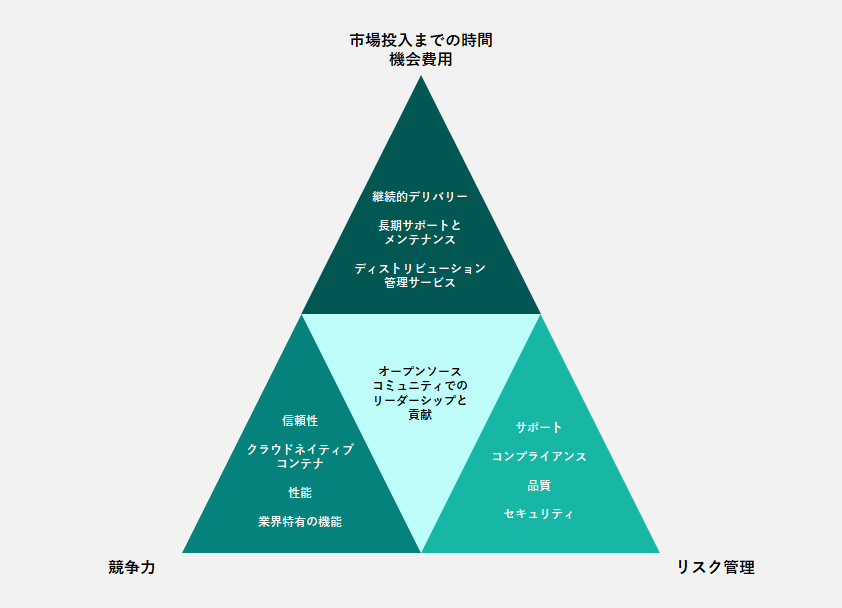
さらに、Wind River Linuxでは、ウインドリバーがすべてのパッケージについて、コンテンツ、著作権、ライセンスに関する完全な情報を提供します。組込みシステムに統合されるIP(知的財産)、ロイヤリティ、サブスクリプションの制約が解決され、法的な責任やコンプライアンスに関する問題を回避することができます。Roll-Your-Own Linuxで課題となるリスクや運用コストを大幅に低減できるため、総所有コスト(TCO)の削減も可能です。
このように、40年にわたって組込みソフトウェアをリードし、15年以上オープンソフトウェアにも貢献してきたウインドリバーの商用Linux製品であるWind River Linuxは、世界中で数億にのぼるデバイスで稼働しており、製品計画、開発、商用デプロイにおいて高い信頼性と柔軟性を提供しています。
組込みLinuxに関するFAQ
TCO Calculator
Embedded Linux:
Build or Buy?
Calculate the costs of building your own embedded Linux product and see how market-leading Wind River Linux can save you up to 57%.
Find the Hidden Costs in Your Embedded Linux Project
Commercially supported Linux is proven to be significantly less expensive and faster to develop than roll-your-own Linux software. It also reduces risks related to security and licensing issues.
This Linux total cost of ownership (TCO) calculator will help you uncover the hidden costs of using roll-your-own (RYO) Linux and highlight how your TCO will change depending on various project and device variables.
Answer the questions below to see your results automatically generated in the graphs on the right. Hover over each part of the graphs for a cost break-down.
These figures have been derived from Wind River customer data.
Download Your Report
Capture the information you’ve generated with the Linux TCO calculator, and save and share the results and analysis easily with your team. If you have any questions, please reach out and we will be happy to help get you on the fast track to cost-effective, rapid, and low-risk embedded Linux.
“50% of companies will face challenges due to lack of free open source software (FOSS) policy and management.”
— Gartner Research
Real-Time Containers for Intelligent Systems
CHOOSE-YOUR-OWN WEBINAR
Real-Time Containers
for Intelligent Systems
Edge computing is forcing software consolidation close to data sources. More than 85% of global organizations will be running containerized applications by 2025, according to Gartner.
Wind River® Principal Technologist Rob Woolley discusses real-time options and how to choose the one most applicable to your use case. View the entire session above, or select the sections you’re most interested in below.

Sample Highlights
Standards Leadership
Aerospace & Defense Standards
ARINC 653
ARINC 653 (Avionics Application Standard Software Interface) defines, at a high level, an instance of software implementation of Integrated Modular Avionics (IMA) architecture. This software specification for space and time partitioning is directed toward safety-critical avionics real-time operating systems. In the context of IMA, it allows the hosting of multiple applications of different software levels on the same hardware.
Wind River® VxWorks® 653 Platform implements ARINC Specification 653, the avionics industry’s standard for Integrated Modular Avionics (IMA). More than 220 customers use VxWorks 653 on more than 360 projects and 100 types of aircraft, both commercial and military.
» Explore VxWorks 653 Platform
Eclipse
Eclipse is an integrated development environment that is used in computer programming. Originally developed by IBM, Eclipse comprises a base workspace and an extensible plugin system for customizing the program development environment.
Wind River Workbench is based on Eclipse, the open standard development framework for enterprise systems. Wind River adds robust support for development of multi-threaded embedded software on single, multi-board, multiprocessor, and multi-core environments. In addition, our large partner ecosystem can now rapidly and reliably integrate into a wide range of Wind River solutions to deliver a rich development experience.
Federal Information Processing Standard (FIPS) 140-3
Cryptographic algorithms used within a system must be certified to the FIPS 140-3 standard as required by the United States Department of Commerce and the Canadian Centre for Cyber Security. FIPS 140-1 was initially published in 1994 and has progressed to 140-3, which was approved in March 2019 and implemented starting in September of 2020. FIPS 140-3 is in alignment with two international standards: ISO/IEC 19790:2012 (security requirements) and ISO/IEC 24759:2014 (test requirements), unifying the community across borders.
With FIPS 140 certified cryptographic algorithms at the center of many standards (e.g., NIST 800-53, Security Requirements Guides), Wind River products have a long track record of supporting FIPS 140 certified algorithms, and our Professional Services organization can define a path for your Wind River product whether it is current or an older version.
Future Airborne Capability Environment (FACE™)
FACE is a collaboration between government, industry, and academia that created a software standard and business strategy with the targeted objective to increase the affordability of airborne capabilities and shorten the time-to-field, bringing new capabilities and innovation to aviation faster. Integrating technical and business practices, the FACE approach creates a standard common operating environment to aid portable capabilities across software systems.
Wind River fully supports the global standardization efforts of over 30 military avionics suppliers to create open platforms for rapid integration of a wide source of legacy and new applications on critical avionics systems. FACE is managed by The Open Group.
A founding member of the FACE Consortium, Wind River currently delivers safe and secure platforms that will support the FACE Reference Architecture’s General Purpose, Safety, and Security operating system profiles.
FACE General Purpose Profile: Wind River Linux products will support the FACE General Purpose Profile. With full compliance to POSIX 1003.1-2008, Wind River Linux will fully comply with the FACE General Purpose Profile that enables support for a wide range of applications on a standard-based foundation.
FACE Safety Profile: For applications with strict safety and/or ARINC 653 time and space partitioning requirements, Wind River VxWorks 653 Platform will be the platform of choice to meet the FACE Safety Profile. With over 220 customers using VxWorks 653 on over 360 programs on more than 100 aircraft, VxWorks 653 is the market-leading ARINC 653 platform solution and will enable a wide range of commercial and military applications to be deployed on FACE platforms.
FACE Technical Standard, Edition 3.2: Wind River Helix™ Virtualization Platform has achieved conformance to the latest FACE Technical Standard, Edition 3.2. The certification establishes Helix Platform conformance as an Operating System Segment (OSS) that supports the Safety Base Profile.
» Explore Wind River Helix Virtualization Platform
IEC 61508 – Functional Safety Standard (A&D Usage)
The aerospace and defense segment uses IEC 61508, the functional safety standard for industrial, for various ground-based weapons, radar, on-board ship systems, and more.
VxWorks Cert Edition provides a commercial off-the-shelf (COTS) solution for satisfying functional safety certification requirements with its complete certification and evidence package for IEC 61508 at SIL 3.
Wind River Certified Network Stack for VxWorks Cert is an embedded TCP/UDP/IPv4 network stack that can be used in conjunction with VxWorks Cert Edition and includes complete certification evidence for IEC 61508 at SIL 3.
» Explore VxWorks Cert Edition
» Explore Wind River Helix Virtualization Platform
Linux Standard Base (LSB) 5.0
LSB is a set of standards for Linux distributions and applications aimed at providing cross-platform compatibility between LSB-compliant Linux distributions and applications. LSB was developed based on the POSIX® specification, Single UNIX Specification (SUS), and other open standards but extended them in certain areas. It is supported on x86, PowerPC, and MIPS architectures. Wind River Linux supports all required user space functionality to be LSB certifiable with the Linux Foundation.
OpenGL ES (Embedded Systems)
OpenGL ES is a subset of the full desktop OpenGL, designed specifically to suit the requirements of resource-constrained embedded devices. For human-machine interface (HMI) and graphical user interface (GUI) requirements, VxWorks supports OpenGL ES for all 2-D and 3-D graphics requirements. Wind River also supports OpenGL SC for safety-critical applications through our partner program.
» Explore the Wind River Partner Program
POSIX PSE52
POSIX PSE52 is a product standard for operating system environments that provide real-time services based on IEEE Std 1003.13 Profile PSE52. For ease of integration with enterprise systems, VxWorks includes a wide selection of POSIX system calls, conforms to the IEEE Standard 1003.13 PSE52 embedded system profile, and is compliant with over 90% of the POSIX PSE53 profile.
POSIX PSE54 and IEEE 1003.1
This product standard is targeted for operating system environments that provide real-time services that are based on the IEEE Std 1003.13 Profile PSE54. Application portability is supported at the source code level and includes the provision of a standard operating system interface and environment, along with a full file system implementation and support for multiple users. To accelerate the use of enterprise-derived software on embedded systems, Wind River Linux has full compliance to IEEE Standard 1003.1 and POSIX IEEE Standard 1003.13 PSE54, consisting of over 900 POSIX system calls.
RTCA DO-178C/EUROCAE ED-12C
RTCA DO-178C and EUROCAE ED-12C are the short names for the guidance document “Software Consideration in Airborne Systems and Equipment Certification.” This guidance document was jointly developed by RTCA and EUROCAE, and released by each organization as harmonized documents. The document provides the avionics community with guidance for determining, in a consistent manner and with an acceptable level of confidence, which software aspects of airborne systems and equipment comply with airworthiness requirements. The document defines several Design Assurance Levels (DALs), from Level A to Level E; failure of Level A software would cause (or contribute to) a catastrophic failure condition for the aircraft which leads to loss of life. The right Design Assurance Level for your software is established in accordance with the system level safety assessment.
The Wind River DO-178 and ED-12 COTS Certification Evidence DVD contains a complete DAL A certification package with over 70,000 hyperlinked files, enabling our customers to achieve lower development costs and faster time-to-market.
VxWorks Cert Edition provides a COTS solution for delivering safety-critical applications that must be certified to the stringent requirements of RTCA DO-178 and EUROCAE ED-12 up to and including DAL A, the highest safety level.
For IMA systems, VxWorks 653 Platform has an industry-leading COTS certification evidence package to support the use of ARINC 653 for systems requiring RTCA DO-178 and EUROCAE ED-12 up to DAL A.
Wind River Certified Network Stack for VxWorks Cert and VxWorks 653 is an embedded TCP/UDP/IPv4 network stack that can be used in conjunction with VxWorks Cert Edition and includes complete certification evidence for RTCA DO-178 and EUROCAE ED-12 at DAL A.
» Explore VxWorks Cert Edition
RTCA DO-297 and EUROCAE ED-124
RTCA document DO-297, Integrated Modular Avionics (IMA) Design Guidance and Certification Considerations, is one of the key documents that are crucial to the approval of avionics and eventually to the certification of the host aircraft. The EUROCAE equivalent of DO-297 is ED-124.
To enable multiple vendors to participate in deploying critical software platforms and applications in shared avionics compute platforms, VxWorks 653 supports platform supplier, application supplier, and system integrator role-based development using the RTCA DO-297 and EUROCAE ED-124 specification.
» Explore VxWorks 653 Platform
RTCA DO-254 and EUROCAE ED-80
Published by RTCA and EUROCAE, the document RTCA DO-254 / EUROCAE ED-80, Design Assurance Guidance for Airborne Electronic Hardware, provides guidance for the development of airborne electronic hardware. In 2005, the FAA established DO-254 as a means of compliance for the design assurance of electronic hardware in airborne systems. It has established five levels of compliance, A through E, which are based on the effect a failure of the electronic hardware in the airborne system will have on aircraft operation. Level A is the most stringent, defined as “catastrophic” effect, and a Level E hardware failure does not affect aircraft safety.
Software Communications Architecture (SCA) 2.2.1/2.2.2
Produced by the U.S. Department of Defense Joint Tactical Networking Center, the Software Communications Architecture V 2.2.2 Product Migration Guide is an engineering-focused document intended to provide practical guidance and suggestions for migrating Software Communications Architecture (SCA) compliant products from version 2.2.2 to 4.1 compliance. The specification incorporates a host of features that facilitate the development and deployment of better performing radio products that are more secure, capable, and cost-effective.
Wind River Linux and VxWorks fully conform to the JPEO Joint Tactical Radio Systems (JTRS) 2.2.1 and SCA 2.2.2 for rapid integration with critical communications components that accelerate deployment of software-defined radios (SDRs) into next-generation military and commercial communications systems.
Industrial Standards
IEC 61508 – Functional Safety Standard
For industrial, IEC 61508 is the functional safety standard. Some other standards that have been derived from IEC 61508 include international standard IEC EN 62304 for medical device software and the ISO 26262 Road Vehicles Functional Safety Standard (functional safety for automotive equipment for all automotive electronic and electrical safety-related systems). For railway transportation, there is EN 50128/9.
VxWorks Cert Edition provides a COTS solution for satisfying functional safety certification requirements with its complete certification and evidence package for IEC 61508 at SIL 3.
Wind River Certified Network Stack for VxWorks Cert is an embedded TCP/UDP/IPv4 network stack that can be used in conjunction with VxWorks Cert Edition and includes complete certification evidence for IEC 61508 at SIL 3.
Helix Platform has been designed to be certified and to simplify the certification of safety-critical applications according to the stringent requirements of the DO-178C Software Considerations in Airborne Systems, IEC 61508 industrial functional safety, and ISO 26262 automotive safety standards.
» Explore VxWorks Cert Platform
» Explore Wind River Helix Virtualization Platform
Linux Standard Base (LSB) 5.0
LSB is a set of standards for Linux distributions and applications aimed at providing cross-platform compatibility between LSB-compliant Linux distributions and applications. LSB was developed based on the POSIX specification, SUS, and other open standards but extended them in certain areas. It is supported on x86, PowerPC, and MIPS architectures. Wind River Linux supports all required user space functionality to be LSB certifiable with the Linux Foundation.
OpenGL ES (Embedded Systems)
OpenGL ES is a subset of the full desktop OpenGL, designed specifically to suit the requirements of resource-constrained embedded devices. For HMI and GUI requirements, VxWorks supports OpenGL ES for all 2D and 3D graphics requirements. Wind River also supports OpenGL SC for safety-critical applications through our partner program.
» Explore the Wind River Partner Program
IEC 62443
IEC 62443 provides a set of security standards for the secure development of Industrial Automation and Control Systems (IACS). It specifies a detailed, systematic set of cybersecurity recommendations for the defense of industrial networks against cybersecurity threats.
VxWorks Cert Edition provides a COTS solution for satisfying functional safety certification requirements with a complete certification and evidence package for IEC 61508 at SIL 3. It is GE Digital® Achilles Level II certified for compliance with IEC 62443 part 4-2.
Automotive Standards
ISO 26262 Automotive Safety Standard
ISO 26262 is an international standard for functional safety in the automotive industry. It applies to the safety-related electrical and electronic systems for the hardware and software components installed in vehicles.
Helix Platform has been designed to be certified and to simplify the certification of safety-critical applications according to the stringent requirements of the DO-178C Software Considerations in Airborne Systems, IEC 61508 industrial functional safety, and ISO 26262 automotive safety standards.
» Explore VxWorks Cert Edition
» Explore Wind River Helix Virtualization Platform
Linux Standard Base (LSB) 5.0
LSB is a set of standards for Linux distributions and applications aimed at providing cross-platform compatibility between LSB-compliant Linux distributions and applications. LSB was developed based on the POSIX specification, SUS, and other open standards but extended them in certain areas. It is supported on x86, PowerPC, and MIPS architectures. Wind River Linux supports all required user space functionality to be LSB certifiable with the Linux Foundation.
Medical Standards
IEC 62304 Medical Standard
The international standard IEC 62304 specifies lifecycle requirements for the development of medical software and software within medical devices. It has been adopted by both the United States and the European Union and can be used as the benchmark for compliance with regulatory requirements in both these markets. To release medical devices to market, medical device manufacturers must adhere to the requirements.
Engineered with medical-grade requirements in mind, VxWorks Cert Edition meets regulatory approval for the IEC 62304 standard, combining strong, built-in security; well-defined software lifecycle processes; and careful attention to the constraints that govern the classification and use of medical devices.
Helix Platform has been designed to be certified and to simplify the certification of safety-critical applications according to the stringent requirements of the DO-178C Software Considerations in Airborne Systems, IEC 61508 industrial functional safety, and ISO 26262 automotive safety standards.
» Explore VxWorks Cert Edition
» Explore Wind River Helix Virtualization Platform
Linux Standard Base (LSB) 5.0
LSB is a set of standards for Linux distributions and applications aimed at providing cross-platform compatibility between LSB-compliant Linux distributions and applications. LSB was developed based on the POSIX specification, SUS, and other open standards but extended them in certain areas. It is supported on x86, PowerPC, and MIPS architectures. Wind River Linux supports all required user space functionality to be LSB certifiable with the Linux Foundation.
Transportation Standards
EN 50128 Transportation Standard
EN 50128 is a certification standard issued by CENELEC (the European Committee for Electrotechnical Standardization) that deals with the functional safety of electrical/electronic/programmable electronic safety-related systems and other related software standards for use in railway control and protection applications.
VxWorks Cert Edition provides a COTS platform for delivering applications that must be certified to the stringent international requirements of EN 50128 up to SIL 4.
WIND RIVER LINUX SOURCE DOWNLOAD
WIND RIVER LINUX SOURCE DOWNLOAD
Fill out the form below to download Wind River Linux and start building your embedded platform.
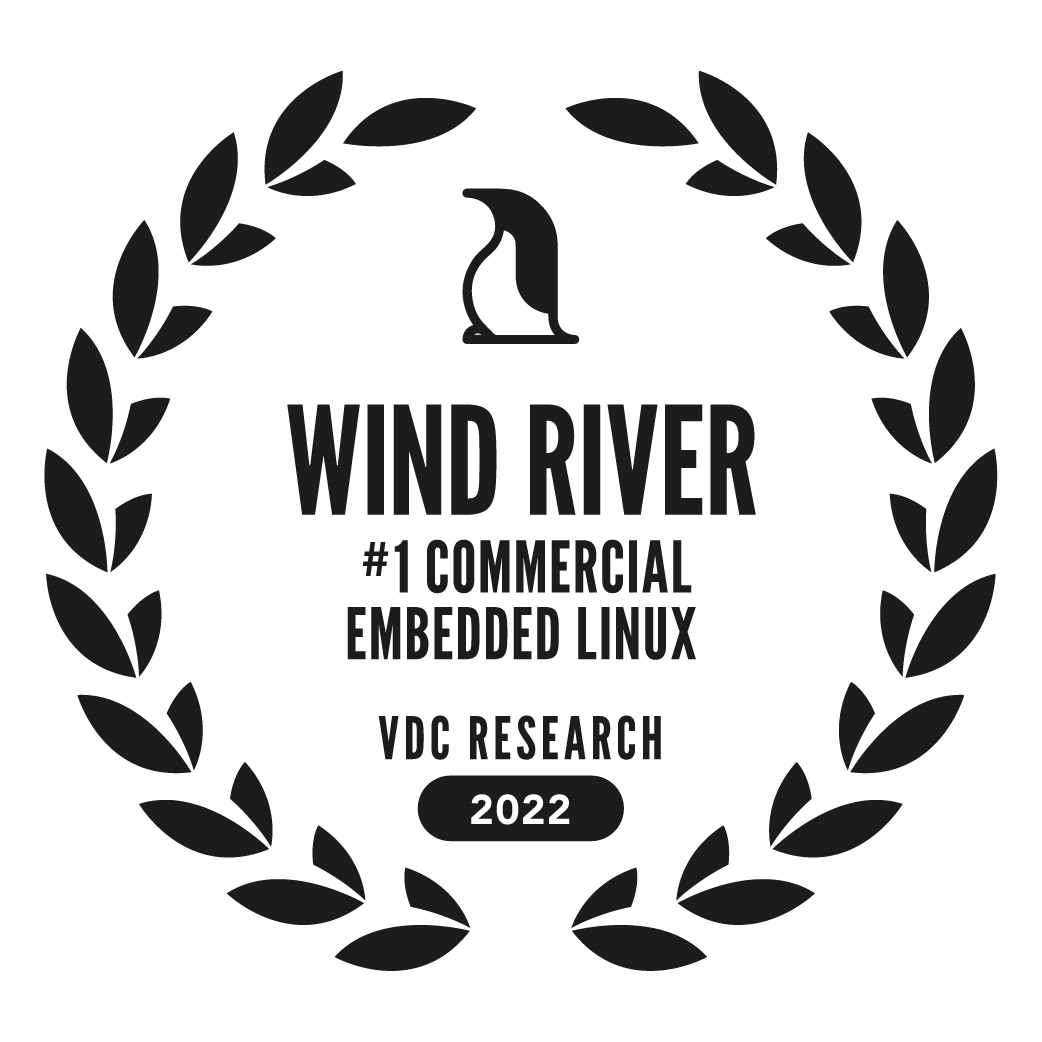
By submitting this form you agree that your personal information will be used by Wind River to process this request and send you further information about Wind River products and services pursuant to our privacy notice located here: windriver.com/company/terms/privacy.
WIND RIVER LINUX
THE #1 COMMERCIAL EMBEDDED LINUX DISTRIBUTION
Contact us to discuss a Wind River Linux subscription that includes
- Long-term support for the lifecycle of your products
- Continuous monitoring and fixes for security vulnerabilities
- Extended list of BSPs across a variety of architectures
- ISO 9001:2015 quality management system standard certification
- Licensing data, source code legal notices, and export disclosure


